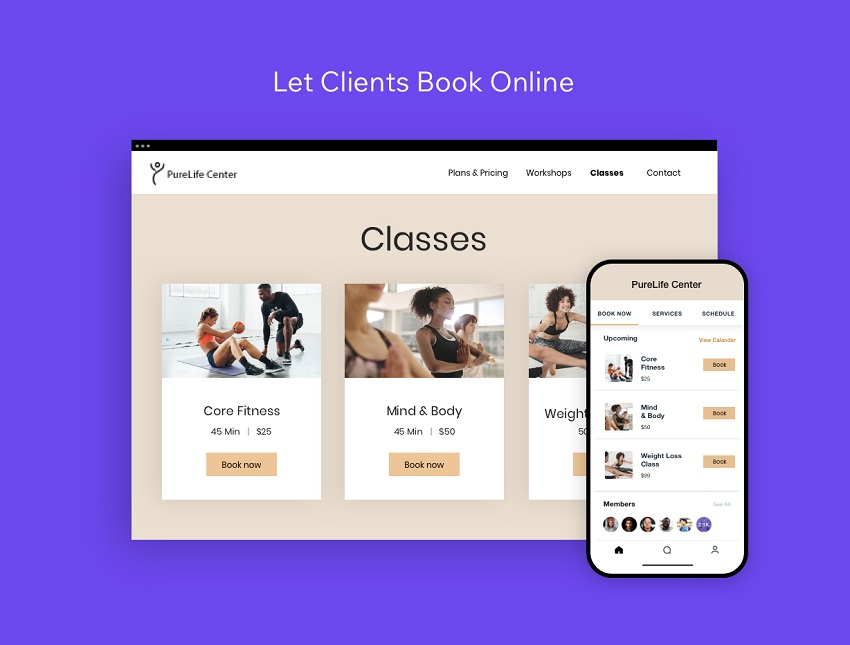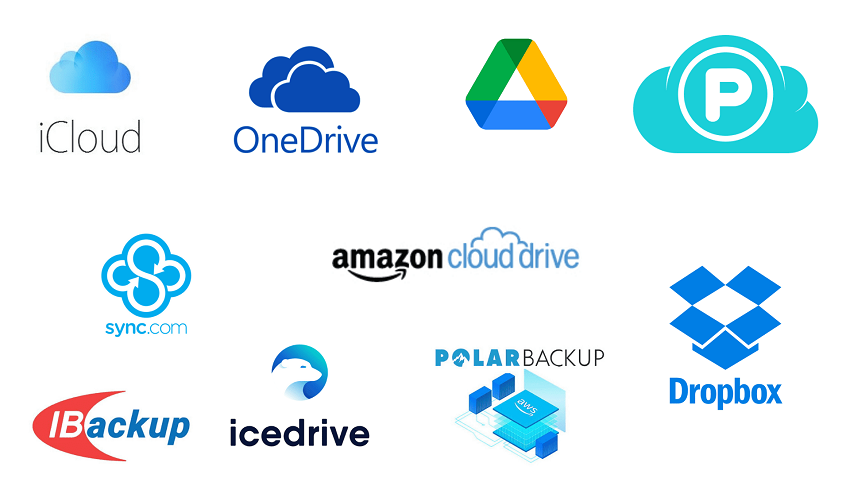Summary: This guide provides 10 actionable steps for launching a photography business. It covers researching profitable niches, essential gear (a photography enhancing tool, for example), building a portfolio, pricing strategies, client acquisition, and management for a thriving business.
Starting a photography business is the perfect blend of creativity and entrepreneurship.
But let's be real—it's not just about having a great eye or a fancy camera. Launching a successful photography business requires strategy, planning, and a solid understanding of the industry.
In this guide, we'll walk you through actionable steps to get your photography business off the ground. From defining your niche and setting up legal foundations to mastering marketing and scaling your operations, we've got you covered.

Many people report that one of the primary concerns when they start their photography business is the image quality.
Regardless of the platform you use, or clients you work for, to sell your photos, quality is essential. Buyers are naturally drawn to images that are sharp, well-composed, and visually striking.
So the question is how to enhance the picture's quality, if it is in a not-appealing condition.
No worries. Here we recommended Aiarty Image Enhancer to help you out.
Aiarty Image Enhancer is a cutting-edge AI-based software designed to enhance image quality by denoising, deblurring, and upscaling images. It leverages advanced AI models to improve low-quality images, restore compressed JPEGs, and enhance AI-generated artwork.
For your photography business, it can be highly beneficial in several ways:
1. Enhanced Image Quality:
- Denoising and Deblurring: Aiarty effectively reduces noise and blur, especially in low-light conditions or when using high ISO settings, ensuring that images appear clearer and more professional.
- Upscaling: It can upscale images to high resolutions (up to 32K), making them suitable for large prints or high-quality digital displays.
2. Restoration of Flawed Photos: Aiarty can restore compressed, or blurry photos, making them look new again. This is particularly useful for historical or vintage photography projects.
3. Facial Restoration: The software enhances facial details by refining skin texture and removing imperfections like blemishes and acne, which is crucial for portrait photography.
4. Efficiency and Productivity: Aiarty allows for batch processing of up to 3000 images simultaneously, saving time and increasing productivity for photographers handling large volumes of photos.
So why not download Aiarty Image Enhancer now to enhance your product shots and advertising visuals?
Step 1. Define Your Photography Niche
Starting a photography business isn't just about snapping great photos—it's about finding your place in the market. Think of it like this: you wouldn't open a restaurant without deciding if it's a burger joint or a sushi spot, right? The same goes for photography. Your niche is your specialty, and it's what will set you apart from the crowd.
1. Research Profitable Niches
Not all photography niches are created equal. Some are more lucrative than others, and some align better with your skills and interests. Here are a few popular options to consider:
- Wedding/Event Photography: This is a classic choice for a reason. People are willing to pay top dollar to capture their big day.
- Commercial/Product Photography: If you've got an eye for detail, this could be your calling. Imagine collaborating with a local bakery to shoot their mouthwatering pastries for their website or social media. It's a win-win—you get paid, and they get professional photos to boost sales.
- Portrait/Family Photography: This niche is all about capturing emotions and relationships.

To find the right niche for you, tools like Google Trends and social media analytics can be your best friends. Look at what's trending in your area and analyze your local competitors. Are there a lot of wedding photographers but few product photographers? That could be your golden opportunity.
2. Assess Your Skills vs. Market Demand
Once you've identified a few potential niches, it's time to ask yourself: Do my skills match the demand? If you're great at capturing candid moments but struggle with studio lighting, wedding photography might be a better fit than product shoots.
Not sure where your skills stand? There are plenty of free resources to help you assess and improve. Check out Udemy courses, Skillshare classes, or workshops from the Canon Community. These platforms offer everything from beginner tutorials to advanced techniques, so you can sharpen your skills and feel confident in your chosen niche.
Step 2. Legal & Financial Foundations
Let's face it—paperwork and finances aren't the most exciting parts of starting a photography business, but they're absolutely essential. Skipping these steps could lead to headaches (or worse) down the road. So, let's break it down into manageable chunks.
First things first: you need to make your business official. This means choosing a legal structure and registering with the appropriate authorities.
- Sole Proprietorship vs. LLC: A sole proprietorship is the simplest option—it's just you, doing business as yourself. But if you want to protect your personal assets from potential liabilities, forming an LLC (Limited Liability Company) might be the way to go. Take Modern Moments Photo, for example. They saved thousands in taxes by structuring their business as an LLC.
- Licensing & Permits: Depending on your location and niche, you might need specific licenses or permits. For instance, if you're planning to offer drone photography in urban areas, you'll likely need FAA certification and local permits.

Once your business is registered, it's time to get your finances in order. Trust me, staying on top of your money from day one will save you a lot of stress later.
- Budgeting Tools: Tools like QuickBooks for freelancers can help you track income, expenses, and taxes. If you're starting with a tight budget, check out Horizon Found's $0-startup guide for tips on launching without breaking the bank.
- Insurance Must-Haves: Protecting your gear and your business is non-negotiable. Look into equipment insurance to cover your camera, lenses, and other gear. Liability coverage is also crucial, especially if you're shooting events where accidents could happen. The Canon Community offers great advice on choosing the right insurance for your needs.
Step 3. Essential Gear & Software
Let's talk about the tools of the trade. While talent and creativity are key, having the right gear and software can take your photography business to the next level. The good news? You don't need to break the bank to get started.
Camera Equipment on a Budget
You might be tempted to splurge on the latest and greatest camera, but that's not always necessary—especially when you're just starting out.
- Starter Kit Recommendations: A refurbished DSLR can be a cost-effective way to get high-quality gear without the hefty price tag. Pair it with a versatile lens, like a 50mm f/1.8, and you're ready to shoot. For lighting, get creative with DIY hacks. Joy Michelle, a successful portrait photographer, swears by thrift-store finds for backdrops and reflectors.
- Rent vs. Buy Strategies: If you're shooting a high-end event and need specialized gear, consider renting. Platforms like BorrowLenses allow you to rent top-tier cameras, lenses, and lighting equipment for a fraction of the cost of buying. It's a smart way to test gear before committing to a purchase.

Editing Software & Workflows
Editing is where the magic happens. Even the best shots can benefit from a little polish, and the right software can make all the difference.
- Free/Low-Cost Tools: If you're on a budget, tools like Aiarty Image Enhancer are a lifesaver.
- Organizing Files: Keeping your photos organized is crucial. Use Lightroom presets to streamline your editing process and invest in cloud storage solutions to back up your work. Two Blooms, a wedding photography duo, swears by a combination of Lightroom and Dropbox for their workflow.
Step 4. Build a Standout Portfolio
Your portfolio is your calling card. It's the first thing potential clients will see, and it's what will convince them to hire you. Think of it as your visual resume—it needs to showcase your best work and reflect your unique style.
Curating Your Best Work

Quality over quantity is the golden rule here. You don't need hundreds of photos—just a handful of your absolute best.
- Portfolio Website Platforms: Your portfolio needs a home, and a professional website is the way to go. Platforms like Squarespace and WordPress are popular choices.
- Mock Projects for Beginners: If you're just starting out and don't have many paid projects under your belt, don't worry. Offer free sessions to friends, family, or local nonprofits. Not only will you build your portfolio, but you'll also gain valuable experience. One photographer I know offered free sessions to a local animal shelter and ended up with a stunning portfolio of pet portraits.
Leverage Testimonials
A great portfolio is even more powerful when paired with glowing testimonials. Social proof can make all the difference in convincing potential clients to book you.
How to Collect Reviews: After a shoot, send a friendly email asking for feedback. Keep it simple: "I'd love to hear about your experience! If you're happy with the results, would you mind leaving a review?" You can also offer incentives, like a social media shoutout or a discount on their next session.
Step 5. Pricing Strategies That Work
Pricing your photography services can feel like walking a tightrope. Charge too much, and you might scare away clients. Charge too little, and you risk undervaluing your work—or worse, burning out. The key is finding a balance that's fair to both you and your clients.
First you need to know that there's no one-size-fits-all approach to pricing, but here are two common models to consider:
- Hourly vs. Package Pricing: Charging by the hour is straightforward, but offering packages can often be more appealing to clients. Take Catier Quillo, for example. She offers a $1,500 wedding package that includes 6 hours of coverage, 50 edited photos, and a custom album. It's a great deal for the client, and it simplifies the booking process for her.
- Hidden Costs to Factor In: Don't forget to account for expenses like travel fees, editing time, and equipment depreciation. These costs add up, and if you don't factor them into your pricing, you could end up losing money.
If there is a negotiation part, remember negotiating with clients can be tricky, but it's an essential skill for any photographer. Here's how to handle it like a pro: Scripts for Client Discussions: Be prepared with a clear, confident response when clients ask about pricing. For example: "Based on your needs, my custom package would include [X hours of coverage, Y edited photos, and Z deliverables] for [price]. This ensures you get exactly what you're looking for."
Step 6. Marketing & Client Acquisition
You could be the most talented photographer in the world, but if no one knows about you, it's going to be tough to book clients. That's where marketing comes in. The good news? You don't need a huge budget to get started—just a solid strategy and a little creativity.
1. Social Media Mastery

Social media is a photographer's best friend. It's where you can showcase your work, connect with potential clients, and build your brand.
- Platform-Specific Tactics: Each platform has its strengths. For example, Instagram Reels are perfect for behind-the-scenes videos and quick tips, while Pinterest is great for driving traffic to your portfolio.
- Collaborations & Partnerships: Partnering with other local businesses can be a win-win. For instance, team up with a florist for a styled shoot. You get stunning content for your portfolio, and they get professional photos to promote their flowers.
2. Local Networking
Don't underestimate the power of face-to-face connections. Building relationships in your community can lead to referrals and repeat business.
- Join Industry Groups: Look for local photography meetups on Meetup.com or join your Chamber of Commerce. These groups are great for networking and learning from other professionals.
- Register on Local Directories: Make sure potential clients can find you by listing your business on Google My Business, Yelp, and niche directories like The Knot or WeddingWire. These platforms can boost your visibility and help you attract clients in your area.
Step 7. Managing Clients Like a Pro
Once you've booked a client, the real work begins. Managing clients effectively is crucial for building a positive reputation and ensuring repeat business. It's not just about taking great photos—it's about delivering a seamless, professional experience from start to finish.
Tip 1. Streamline Client Management with Tools
Juggling bookings, payments, and deliverables can get overwhelming. That's where the right tools come in:
Platforms like Wix Bookings & Photo Albums can save you a ton of time. They handle scheduling, payments, and even photo delivery, so you can focus on shooting.

Want to sell prints, digital downloads, or presets? Integrate an e-commerce platform like Shopify or Wix Art Store into your website. It's an easy way to generate passive income while offering clients more options.
Tip 2. Contracts & Communication
Clear communication and solid contracts are your best defense against misunderstandings or disputes. Your contract should include a cancellation policy, usage rights, and a clear outline of deliverables. Need a template? Check out Docracy for free, customizable contracts.
Besides, tools like HoneyBook and Trello can help you stay organized. Use them to track deliverables, send reminders, and keep everything on schedule.
Tip 3. Delivering Exceptional Experiences
Happy clients are your best marketing tool. Go the extra mile to make their experience memorable, for example, sending sneak peeks within 48 hours of the shoot to build excitement. It's a small gesture that can leave a big impression.
Step 8. Scaling Your Business
Once your photography business is up and running, it's time to think about growth. Scaling doesn't just mean taking on more clients—it's about working smarter, not harder, and finding ways to increase your income without burning out.
First of all, why not let your work make money for you while you sleep? Passive income streams can be a game-changer for photographers.
- Sell Presets/Stock Photos: If you've developed a signature editing style, consider selling Lightroom presets. Platforms like Adobe Stock are also great for selling your photos.
- Online Workshops: Share your expertise with others. One Reddit user started offering photography tutorials on Patreon and now earns an extra $200 a month. It's a win-win—you get paid, and your students learn valuable skills.
Besides, as your business grows, you'll likely find yourself stretched thin. That's when it's time to bring in reinforcements.
- When to Hire Assistants/Editors: If you're consistently booking more than 20 hours a week, it might be time to hire help. Start with a part-time assistant or freelance editor to lighten your workload.
Step 9. Run Seasonal Promotions & Build Credibility
Seasonal promotions are a fantastic way to attract new clients and keep your calendar full during slower months. But they're not just about discounts—they're also an opportunity to showcase your creativity and build credibility.
Holiday Campaigns

Holidays are a natural time for promotions because people are already in the mood to celebrate—and spend.
- Email Marketing Tools: Use platforms like Wix Email Marketing to create eye-catching campaigns. For example, offer Valentine's Day mini-sessions for couples or Black Friday print sales for holiday gifts. These limited-time offers create urgency and encourage clients to book quickly.
Ethical Certifications
In a crowded market, standing out is key. One way to differentiate your brand is by aligning with values that matter to your clients.
- Eco-Friendly or Fair Labor Practices: Consider certifications that highlight your commitment to sustainability or ethical practices. For instance, using eco-friendly packaging or partnering with fair-trade vendors can resonate with environmentally conscious clients.
Step 10. Do Not Forget to Protect Your Work with Data Backups
Imagine this: you've just finished editing a client's wedding photos, and your hard drive crashes. Poof—all your hard work is gone. Scary, right? That's why data backups are non-negotiable for photographers.
Cloud storage is a lifesaver when it comes to protecting your work. It's secure, accessible from anywhere, and—best of all—it's automated.
- Tools Like Backblaze or Dropbox: These platforms make it easy to back up your files automatically. One photographer I know recovered an entire wedding gallery thanks to Backblaze after her hard drive failed. It's a small investment for peace of mind.

Conclusion
Starting a photography business is an exciting journey that combines creativity, strategy, and a whole lot of passion. From defining your niche and setting up legal foundations to mastering marketing and scaling your operations, there's a lot to consider—but with the right approach, you can turn your love for photography into a thriving career.
Remember, success doesn't happen overnight. It's about taking consistent, actionable steps and learning as you go. Whether you're just starting out or looking to grow your existing business, the key is to stay focused, stay organized, and always keep your clients at the heart of what you do.
So grab your camera, embrace the challenges, and start building the photography business of your dreams. The world is waiting to see your unique perspective—one click at a time.